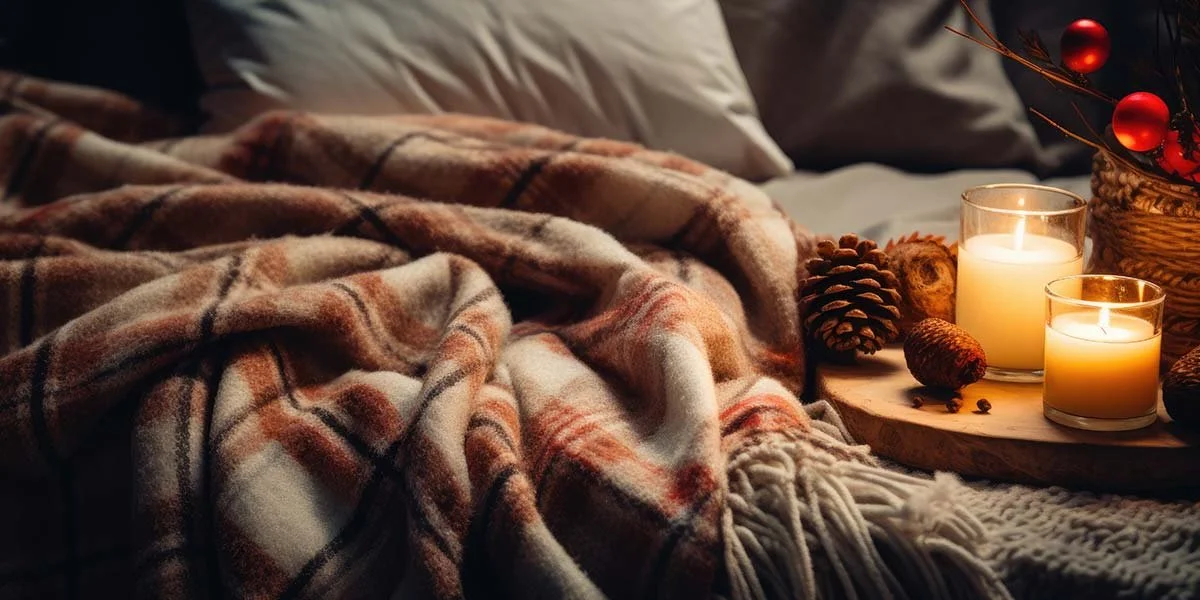We live in a world that glorifies hustle, efficiency, and optimization. You’re told to be productive, to squeeze every drop out of your time, and to always be reaching for the next goal. But when was the last time you optimized your environment for comfort?
Enter cozymaxxing, a growing movement that prioritizes deliberate comfort as a form of self-care. Not just physical comfort—though that’s part of it—but an intentional practice of crafting an environment that nurtures your mental well-being.
This isn’t about escapism. This isn’t about being lazy. It’s about recognizing that your physical surroundings directly influence your state of mind. Cozymaxxing is the practice of using warmth, texture, lighting, scent, and ambiance to reduce stress, increase emotional resilience, and make your space a sanctuary for mental health.
And the science backs it up.
The Science of Comfort: Why Cozymaxxing Works
Your brain is wired for safety. When you’re in an environment that feels warm, soft, and familiar, your parasympathetic nervous system (the part responsible for relaxation) kicks in. Cortisol (the stress hormone) drops. Heart rate slows. Muscles relax.
A study in the journal Environmental Psychology (2018) found that soft textures, warm lighting, and natural elements create an immediate sense of calm, reducing stress and increasing feelings of security (Fay & Van der Linden, 2018).
Another study from Frontiers in Psychology (2021) suggests that ambient warmth and soft lighting trigger a neurological response similar to social bonding—meaning cozy spaces can literally make you feel less lonely (Rantala et al., 2021).
In other words, your environment isn’t just background noise. It’s an active participant in your mental well-being.
So what does that mean for you? It means that cozymaxxing isn’t just about aesthetics—it’s about self-preservation. It’s a way to tell your nervous system, "You’re safe. You can rest now."
How Cozymaxxing Reduces Stress & Anxiety
Stress and anxiety are at an all-time high. The American Psychological Association’s Stress in America report (2023) found that 77% of Americans experience physical symptoms of stress regularly, and 73% struggle with mental symptoms like racing thoughts, sleeplessness, or feeling overwhelmed.
But here’s the good news: you can create a space that counteracts stress and promotes relaxation—a literal "reset button" for your nervous system.
1. Warmth Triggers Comfort & Emotional Security
Research shows that warmth—both physical and emotional—is a direct cue for relaxation. A study in Physiology & Behavior (2019) found that warm environments reduce the body’s fight-or-flight response, helping regulate emotions and decrease stress (Chong et al., 2019).
Cozymaxxing embraces warmth in different ways:
Soft blankets (weighted blankets have been shown to reduce anxiety by 63%)
Warm beverages (tea and warm water can actually trigger relaxation signals in the brain)
Candlelight or soft lamp lighting (harsh blue light triggers cortisol, while warm light mimics sunset and tells your brain to wind down)
2. Textures Rewire Your Brain for Calm
Your sense of touch is a direct line to your nervous system. Soft, plush textures send signals of comfort and security, reducing stress responses in the brain.
Furry rugs, plush pillows, and knit blankets have been shown to lower stress levels by engaging the tactile sense.
Weighted blankets can mimic the effects of deep pressure therapy, reducing symptoms of anxiety and PTSD (Ackerley et al., 2020).
Natural textures like linen, wool, and cotton feel grounding and can lower sensory overload.
3. Cozy Spaces Create Rituals (and Rituals Reduce Anxiety)
Humans thrive on ritual. Our brains love predictability, and when you create a cozy ritual—like curling up in your favorite chair with tea and a journal—it becomes a mental cue for relaxation.
A dedicated reading nook signals "this is my unwind space."
Lighting a candle before journaling creates a sensory anchor for mindfulness.
Soft instrumental music in the background can train your brain to associate certain sounds with relaxation.
When you repeat these actions, your brain learns to expect safety and calm in these spaces. Over time, this reduces overall anxiety and builds mental resilience.
How to Cozymaxx Your Space for Better Mental Health
So, how do you get started? It’s not about aesthetic perfection—it’s about intention. Here’s a step-by-step approach to cozymaxxing for mental well-being:
1. Audit Your Environment
Look around your space. Ask yourself:
Does this space make me feel safe, calm, and comfortable?
Is the lighting harsh, cold, or artificial?
Are there cluttered or chaotic areas that stress me out?
Do I have textures, scents, or items that bring comfort?
Your goal is to make your space work for your mental health, not against it.
2. Adjust Your Lighting
Lighting is one of the biggest stress triggers in modern spaces. Swap bright white or blue-toned light (which signals alertness) for warm, dimmable lighting.
Use soft white or amber bulbs
Try salt lamps or candlelight in the evenings
Turn off harsh overhead lights and use lamps for softer illumination
3. Curate Your Textures
Engage your sense of touch with comforting materials:
A plush rug underfoot (so every step feels warm)
Throw blankets within reach (for instant coziness)
A soft chair or couch setup (where you naturally want to relax)
4. Bring in Natural Elements
Nature is scientifically proven to reduce stress. If you can’t be in nature, bring nature inside.
Add houseplants (NASA studies show they improve air quality and reduce anxiety)
Use wood, linen, wool, and stone in decor
Open windows for fresh air whenever possible
5. Create Cozy Rituals
Cozymaxxing isn’t just about objects—it’s about how you use them.
Journaling by candlelight in the evening
Drinking herbal tea before bed
Using essential oils to create a sensory anchor
Setting aside time to read, rest, or reflect
The goal is to create micro-moments of comfort that tell your brain, "I am safe. I can slow down."
Cozymaxxing is a Mindset Shift
We often dismiss comfort as a luxury—but in reality, comfort is essential for mental well-being. Cozymaxxing isn’t about aesthetics or indulgence—it’s about curating an environment that supports your nervous system. It’s about creating a home that heals, rather than one that drains you.
So, what’s one small way you can cozymaxx your space today?
Because when you give yourself permission to feel safe, comfortable, and at peace, you’re not just making your home cozier—you’re making your mind a better place to live, too.

